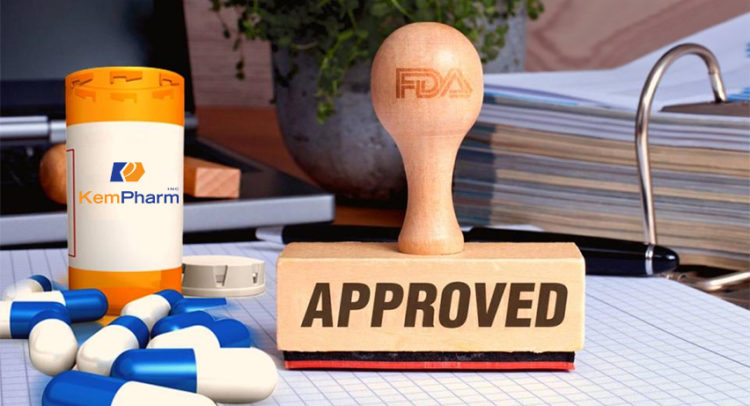Usually when a pharma company announces approval of one of its products, it usually merits an upwards rejig to an analyst’s model. But “usually” doesn’t mean “always.”
On Wednesday, KemPharm (KMPH) announced that the FDA had given its nod of approval for Azstarys, the company’s once a day treatment of attention deficit hyperactivity disorder (ADHD). But where the analyst’s model is concerned, H.C. Wainwright analyst Oren Livnat points out why his reaction to the approval is not as would be anticipated.
As Livant highlights, the decision makes Azstarys the first approved prodrug version of any MPH-based ADHD product— putting it amongst a group that generates almost 20 million prescriptions annually. So, good news there.
What’s more, the potential cash windfall from the approval is significant. KemPharm has a commercial partnership with Corium, a portfolio company of Gurnet Point Capital. KemPharm could be due a $48 million approval milestone payment, royalties of high-single digits up to mid-20%, and sales-based milestones that could reach up to $42 million.
However, “potential cash windfall” is the key phrase here, says Livnat, because of a “disagreement on terms given the final Azstarys label.”
Livnat has long maintained that Azstarys’ label notes regarding onset and duration of efficacy, will be key.
“We believe the drug has best-in-class 0.5-13 hour efficacy, but its pivotal classroom study—with an unorthodox SAP—yielded 1-10 hours. Post hoc analysis using FDA’s typical method, as well as secondary endpoints and PK data, support 0.5-13 hours,” the 5-star analyst said. “The approved label seems to be an FDA compromise, with an efficacy curve reflecting as reported pivotal data rather than better post hoc curves, but without error bars specifying lack of statistical significance at the earliest and latest timepoints, thus still conveying drug superiority vs. placebo for 0.5-13 hours.”
That issue aside, Livnat says the label looks good, and should help make Azstarys the “Vyvanse of methylphenidate.”
But while Livnat still believes that Azstarys’ peak sales could reach over $300 million and the label should be enough for Corium to “differentiate the product,” there could be trouble ahead.
“There now appears to be risk that GPC does not view the label as sufficiently reflecting the best-case 0.5-13 hour profile, which represents downside risk to deal terms, including the $48M approval milestone and perhaps royalty rates,” the analyst said.
Therefore, while the approval amounts to a “major achievement,” given the “uncertainty around economics,” and the recent January dilution far beyond Livnat’s prior estimates, the analyst downgraded his rating from Buy to Neutral (i.e. Hold). Livnat also slashed his price target from $24 to $12, leaving room for 19% upside from current levels. (To watch Livnat’s track record, click here)
Only one other analyst has recently posted a KMPH review, but his outlook is far rosier. The extra Buy provides the stock with a Moderate Buy consensus rating, and the $20 average price target suggests 99% upside in the year ahead. (See KMPH stock analysis on TipRanks)
To find good ideas for health stocks trading at attractive valuations, visit TipRanks’ Best Stocks to Buy, a newly launched tool that unites all of TipRanks’ equity insights.
Disclaimer: The opinions expressed in this article are solely those of the featured analyst. The content is intended to be used for informational purposes only. It is very important to do your own analysis before making any investment.










